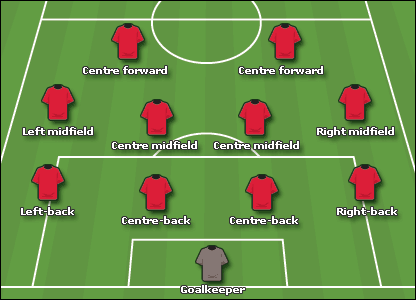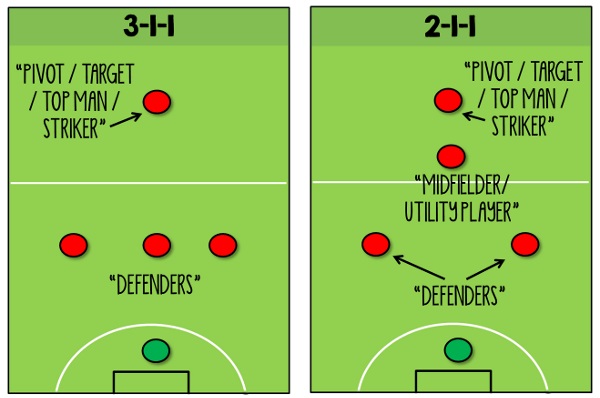Indoor soccer, futsal, and outdoor soccer are pretty similar because all three are, well… soccer. Besides the difference in the name, there are a few things that make the three versions of soccer a little different from each other. The main concept is the same. Who can score the most goals? But when it comes to the rules and equipment for each of the games. Let’s take a look at the differences;
1. The Playing Field or Space
Perhaps the major difference between futsal and outdoor soccer lies in the space where the game is played. Indoor soccer is obviously played indoors and therefore the field is much smaller compared to outdoor soccer. Typically indoor soccer fields have some sort of turf, but can also be played on a hard floor. Futsal is also played indoors and often in a smaller space than normal indoor soccer and is played on hard surfaces such as hardwood. Both indoor and futsal can be played with walls.
Both Futsal and indoor soccer fields tend to vary depending on the facility, but there is an official size for a Futsal field.
Minimum 25 m × 16 m (82 ft × 52 ft), maximum 42 m × 25 m (138 ft × 82 ft).
Outdoor soccer is played on a larger field, with grass or artificial turf. There is a range for the official size of a soccer field.
110–120 yards (100–110 m) long by 70–80 yards (64–75 m) wide
As per Fifa, explained in their Rules of the Game.
For a more in depth description of Futsal check out this page “What is Futsal?“
2. Players and Formation
A normal soccer team consists of 11 players including the keeper. However, in indoor soccer, because of the limited space, the number of players is less ranging from 5 to 8 players depending on a team’s arrangement. Most professional indoor soccer teams consist of 6 players. The formation also differs in the fact that in indoor soccer there are two forwards, one midfielder, two on the defense, and one keeper in a typical 6 player team while in outdoor soccer, there is the keeper, 4 defenders, 4 midfielders, and two forwards.


Playing Gear
The playing gear for both outdoor soccer and indoor soccer only differs in the type of shoes. Both require shin guards, long socks, and a pair of cleats. While outdoor soccer cleats have studs on their outsoles because they play outdoors and they require more traction on the grass or turf, indoor soccer shoes are flat because they require less traction on the field they play on. Some people advise that you can substitute your soccer cleats with normal working out trainers.
Best Wide Indoor Soccer Shoes
Most Expensive Soccer Cleats
Best Soccer Cleats for Wide Feet
Rules
Another major difference comes in the rules as stated in Newswire.net in an article by L. White. For instance, while in outdoor soccer there is the offside rule; indoor soccer does not have an offside rule.
Another example is in the penalty/punishment for any fouls. In outdoor soccer, a red card or yellow card is shown to a player when he/she commits a foul. In indoor soccer, however, the same may apply but mostly they use the time-out box for fouls whereby a player leaves the field making his team play one player short.
Additionally, in indoor soccer slide tackle is not allowed, which is not the case for outdoor soccer. With the limited playing field and the type of ground they are playing on, there is a high probability for an injury. Whereas in outdoor soccer the slide tackle is a common technique.
Pace
Another significant difference between the two sports is that indoor soccer is much faster and therefore requires more tact, unlike outdoor soccer which is less fast. With indoor soccer, you have to think on your feet and you are not allowed to possess the ball for more than 5 seconds without making a pass or a shot unlike in outdoor soccer where you can dribble the ball for longer.
Duration
Outdoor soccer is a 90-minute game with only one half-time of 15 minutes. Whereas indoor soccer is a four-quarter 60-minute game with 3-minute breaks in between the first and second, third and fourth quarters, and a 15-minute break between the second and third quarters.
Substitution
Indoor soccer allows for unlimited substitutions in a match for players. While outdoor soccer only allows 3 substitutions during the entire match.
The aforementioned are the key differences between indoor and outdoor but the concept of soccer is the same and a player can play both games without a hassle. Other minor differences like multi-point scoring for indoor soccer and the time out box rule are mostly adopted from other sports such as ice hockey. A player can learn to play both sports in order to perfect each one of them and achieve an all-round tact. For example, since indoor soccer is a faster game, a player can borrow this and apply it in outdoor soccer for better skill. Indoor soccer also requires a fast thinker. And this really helps even in the outdoor field and a player can excel in both successfully.



